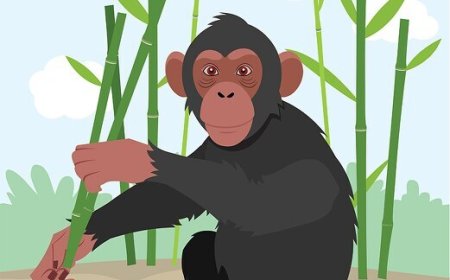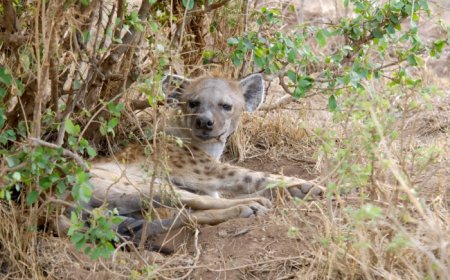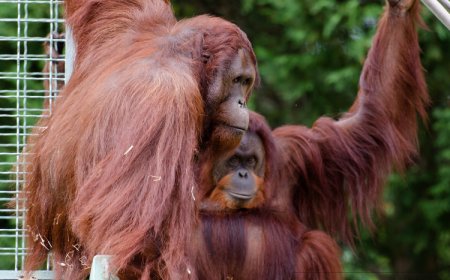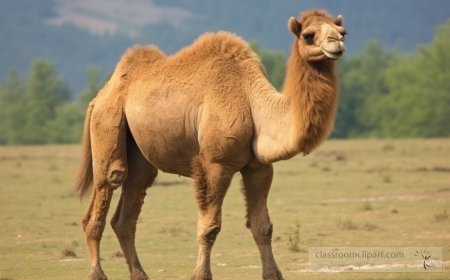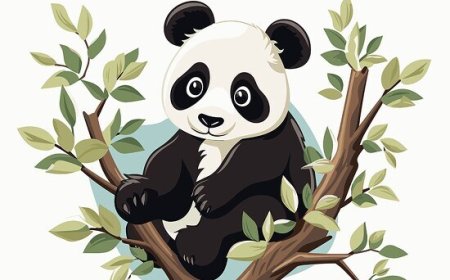All About Polar Bears: Arctic Hunters of the Ice
Explore the icy world of polar bears in this full-length article for students. Learn how they hunt, survive the cold, and face climate threats. Includes vocabulary, quiz, and kid-friendly summary
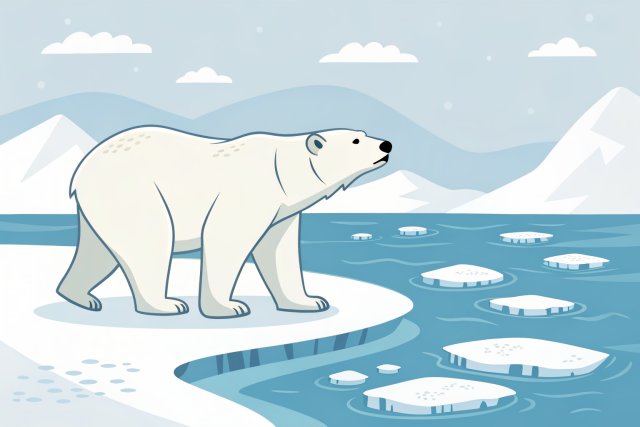
❄️🐻❄️ Polar Bears: Arctic Hunters of the Ice
Polar bears are powerful, intelligent predators that roam the frozen lands and seas of the Arctic. Known for their white fur, giant paws, and strong swimming skills, polar bears are the largest land carnivores in the world. They are specially adapted to survive in some of the coldest environments on Earth and are perfectly built to hunt on sea ice, swim across frigid waters, and rest on snowy shores.
These animals may look cuddly, but they are expert hunters and solo wanderers. Yet today, polar bears are facing serious challenges. As the Arctic warms and sea ice melts, their hunting grounds are shrinking—making polar bears one of the most visible victims of climate change.
🌍 Habitat and Geographic Range
Polar bears live in the Arctic Circle, which includes parts of Canada, Greenland, Norway (Svalbard), Russia, and the northern coasts of Alaska. They spend most of their time on sea ice, which forms over the ocean during the long winter months. This ice is where they rest, travel, mate, and most importantly, hunt for food.
During the summer, when much of the sea ice melts, polar bears may come ashore or follow the ice edge northward. In some areas, they fast for months while waiting for the ice to return. Because they rely on sea ice to survive, polar bears are considered marine mammals—just like seals and whales.
Polar bears have very large home ranges. A single bear might travel hundreds of miles each year in search of food and safe places to rest. They are solitary by nature, only coming together to mate or when a mother is raising her cubs.
🦭 Diet and Hunting Behavior
Polar bears are carnivores, and their main food is seals, especially ringed seals and bearded seals. Seals are rich in fat, which provides the high energy polar bears need to survive cold weather and long periods without food.
Polar bears hunt in several ways, including:
- Still-hunting: waiting silently by a seal's breathing hole and ambushing it
- Stalking: sneaking up on resting seals on the ice
- Breaking into dens: sometimes digging into snow dens where seals give birth
Once a seal is caught, the polar bear eats mostly the blubber (fat layer), which is high in calories. A single large seal can give a polar bear enough energy to survive for a week or more.
Polar bears also scavenge when they can. In the summer, they may eat bird eggs, dead whales, or berries, but these foods are not enough to keep them healthy long-term. That’s why sea ice is essential—without it, they can’t catch enough seals to survive.
🧥 Adaptations for Arctic Life
Polar bears have an incredible set of physical features that allow them to live in extreme cold.
Fur and skin: Their fur appears white but is actually transparent and hollow, helping reflect and trap heat. Underneath, their skin is black, which helps absorb sunlight.
Blubber: A thick layer of fat (up to 4.5 inches) keeps them warm in icy waters.
Paws: Huge paws (up to 12 inches wide) act like snowshoes to walk on soft snow and ice, and their rough pads help grip slippery surfaces.
Swimming: Strong front legs let them swim long distances—some polar bears have swum over 60 miles (100 km) without stopping!
Nose and hearing: Powerful sense of smell allows them to detect seals from over a mile away, even under snow or ice.
These adaptations make polar bears top predators of the Arctic, perfectly suited for life on ice and snow—at least, when it’s available.
🍼 Life Cycle and Cubs
Polar bears mate in spring (April to June), but the fertilized egg doesn't start developing right away. This delay, called delayed implantation, allows the female time to gain weight and find a safe place to build a den.
In fall, pregnant females dig snow dens on land or ice and go into a light hibernation. After about 8 months of pregnancy, they give birth to 1–3 cubs, usually in December or January. Cubs are born blind, hairless, and about the size of a guinea pig.
The mother stays in the den for several months, nursing her cubs on rich milk. When the cubs are about 3 months old, the family emerges from the den. The cubs follow their mother closely and learn how to survive by watching her hunt and navigate the ice.
Cubs stay with their mother for about 2.5 years, gaining strength and skills before going off on their own. Female polar bears may only raise five litters in a lifetime, making every cub important to the future of the species.
⚠️ Threats and Conservation
Polar bears are listed as vulnerable by the IUCN, and scientists believe their population will decline sharply if climate change continues at the current rate. The biggest threat to polar bears is melting sea ice, which reduces their ability to hunt, rest, and reproduce.
🚨 Threats include:
- Climate change, which melts the ice earlier each year
- Longer fasting periods, leading to starvation
- Pollution, including toxic chemicals in the Arctic food chain
- Oil and gas exploration, which disturbs habitats and risks spills
- Conflict with humans, especially when bears come ashore near towns
🛡️ Conservation actions:
- Monitoring polar bear populations with GPS collars and drones
- International agreements, like the Polar Bear Agreement between Arctic nations
- Reducing greenhouse gas emissions to slow climate change
- Educating people in Arctic communities about safe bear practices
- Creating protected marine areas where polar bears can safely hunt and raise cubs
Organizations like WWF, Polar Bears International, and the U.S. Fish and Wildlife Service are leading efforts to keep polar bears safe and their Arctic homes protected.
🎉 Fun Facts About Polar Bears
- Polar bears can overheat if they run—they’re better suited to cold!
- Their fur is water-repellent and dries quickly after a swim
- Cubs play-fight to learn hunting skills
- A polar bear's nose is so powerful it can smell a seal from over a mile away
- They are classified as marine mammals, not land mammals
🧠 Vocabulary List
- Carnivore – An animal that eats only meat
- Blubber – Thick fat under the skin used for warmth
- Arctic – The cold northern region of Earth, around the North Pole
- Marine mammal – An animal that lives mostly in the ocean but breathes air
- Vulnerable – At risk of becoming endangered
- Fasting – Going without food for a long time
- Hibernation – A resting period with slowed body activity
- Conservation – Protecting animals and natural habitats
- Climate change – Long-term warming of the Earth’s climate
🧒 Kid-Friendly Summary
Polar bears are giant white bears that live in the cold Arctic. They spend most of their time on sea ice, hunting for seals and swimming between ice floes. Their big feet, thick fur, and fat keep them warm in freezing temperatures. Cubs stay with their mom for over 2 years, learning how to hunt and survive.
But polar bears are in big trouble because the ice they need to live on is melting. People around the world are working hard to protect polar bears and help slow climate change so they can keep hunting and raising families in the wild.


















































